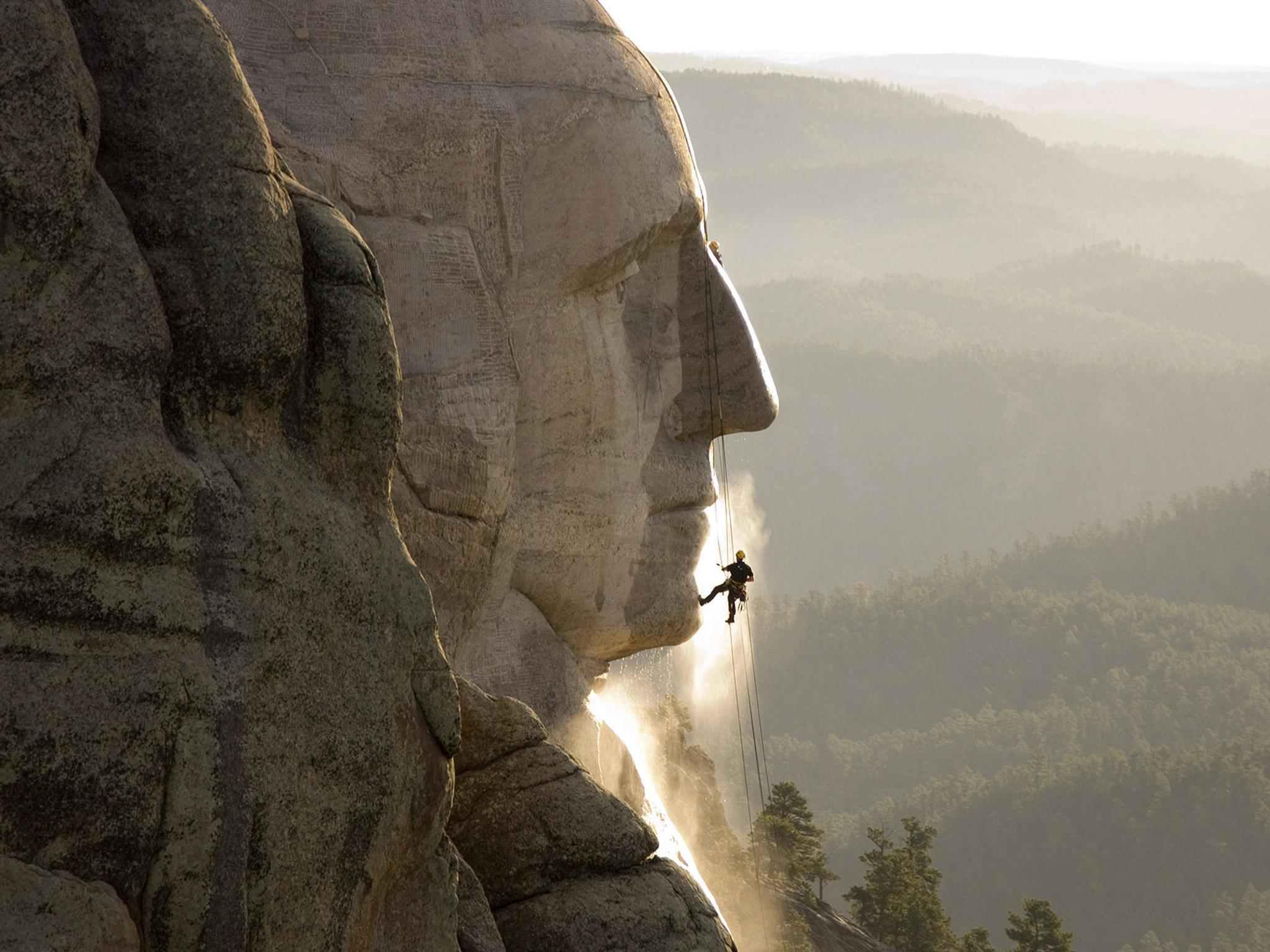Icon cleaner: The man who brushes down famous monuments from Mount Rushmore to the London Eye
Thorsten Möwes' job means he has enjoyed some of the most famous sites on earth from a very unique angle

Your support helps us to tell the story
From reproductive rights to climate change to Big Tech, The Independent is on the ground when the story is developing. Whether it's investigating the financials of Elon Musk's pro-Trump PAC or producing our latest documentary, 'The A Word', which shines a light on the American women fighting for reproductive rights, we know how important it is to parse out the facts from the messaging.
At such a critical moment in US history, we need reporters on the ground. Your donation allows us to keep sending journalists to speak to both sides of the story.
The Independent is trusted by Americans across the entire political spectrum. And unlike many other quality news outlets, we choose not to lock Americans out of our reporting and analysis with paywalls. We believe quality journalism should be available to everyone, paid for by those who can afford it.
Your support makes all the difference.It was after he had scrubbed George Washington’s face clean that Thorsten Möwes had one of the most memorable moments of his career.
“The superintendent of Mount Rushmore, Gerard Baker - a Mandan-Hidatsa Indian who is an impressive 6.5 foot tall - held a small ceremony in the way of his Indian tradition for us to celebrate the success of the project,” recalls Möwes, who is an icon cleaner and project manager at Kärcher. He spends his days scrubbing down the most famous monuments in the world. In this case, he was giving the presidential heads carved into Mount Rushmore a little TLC.
“At sunset, were we on the head of George Washington before the most stunning landscape, he sung us traditional songs. This was one of those ‘goose bump’ moments of my career,” the tells The Independent.
Over the course of his 25-year career he has tended to other landmarks including the London Eye and the Seattle Space Needle, on the west coast of the US.
“In my job I have enjoyed some of the most spectacular views in the world,” says Möwes.
But while that certainly beats spending nine-to-five behind a desk, being exposed to the elements is tough.
“The weather conditions when cleaning the London Eye were some of the toughest in my career,” he says, recalling a project in March 2013.
“It was cold, rainy and snowy and we had to work at night so that the London Eye could continue running during the day for its visitors.
“In these conditions, the night shifts were especially exhausting as climbing outside at freezing temperatures is quite challenging.”
“It was similar when we cleaned the Space Needle,” he goes on. “We worked at night and as the structure is very close to the shore, we had quite sudden changes in weather conditions.
“It was hard to predict when the very strong winds were about to change, especially when you are hanging outside the tower on a rope. At points we had to stop our work because the wind was so heavy.”
Over the years, Möwes has picked up some handy tricks for shifting dirt on monuments that are battered by the elements.
Accessing the nooks and crannies of delicate or very tall monuments can be one obstacle that faces Möwes.
“Mount Rushmore was the project where we used rope access for the first time.
"As it's a mountain, there was no infrastructure around. No electricity, and no water. So it had to be pumped every morning by the local fire fighters over 2km to reach our cleaning site. All our equipment had to be flown up onto the heads of the presidents by helicopter.
The team must also assess whether the material of the object is stable, like the London Eye, or delicate or porous, like a Roman column.
“At the Colossus of Memnon in Egypt, our oldest object was 3,300 years old. As the stone is so delicate, we had to clean the object very carefully. Some days, it was only possible to clean a square metre the entire day."
“First we look at whether the dirt is loose like dust or is it stubborn and encrusted, or made of biological growths.”
“Oil and grease are quite hard to clean. This was the case at the London Eye. The main challenge there was oil and grease, which is necessary for the mechanics. But it had also spread out to the rest of the construction and the cabins, where it shouldn’t have been. So we had to use cleaning agents, which we rarely do, and also carefully collected the wastewater for proper recycling.”
And despite spending most of his time dangling in the air, Möwes says the public also make his job more exciting.
“Mostly, people are very impressed by our work and they like it a lot, especially when we are using ropes for the cleaning. These are impressive sights for those who are not used to it. And of course, it is not something that you see every day.
"We are asked to take pictures with spectators quite often. As we were cleaning the Space Needle, hanging outside on the ropes, visitors took selfies from the inside through the windows of the visiting platform with us in the background.”
But Möwes doesn’t mind that. After all, whether he’s washing George Washington’s face or polishing the London Eye, Möwes’ objective is the same.
“The main priority in my work is the preservation of cultural heritage for future generations to enjoy.”
Join our commenting forum
Join thought-provoking conversations, follow other Independent readers and see their replies
Comments